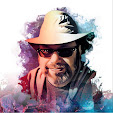 The first character I played in the Aegis campaign in South Bend was a speedster named Afterburner. There were already several established characters in the second generation of Aegis superheroes and I didn’t want to step on anyone’s toes.
The first character I played in the Aegis campaign in South Bend was a speedster named Afterburner. There were already several established characters in the second generation of Aegis superheroes and I didn’t want to step on anyone’s toes.When you play Champions, there are several archetypes. You can often see a martial artist/gadgeteer, like Batman, a brick like the Thing, a flying energy projector, like the Human Torch, a mentalist like Professor X, or an armored guy like Iron Man. There are combinations of these, but usually characters get lumped into one category or another. Aegis wasn’t like that. Element had four forms. Willforce could basically do whatever he could imagine—I mean, hallucinate. Killshaft had a wide variety of trick arrows, and Prism had varied effects on her light powers. Almost everyone was extremely versatile, and fast!
 I chose to play a speedster in a campaign where the typical speed was already high. I didn’t have a lot of experience in creating Champions characters. There were hundreds of pages of rules spread over dozens of rulebooks and supplements at the time. So Scott, the gamemaster, helped me with it. I was not pleased with the results.
I chose to play a speedster in a campaign where the typical speed was already high. I didn’t have a lot of experience in creating Champions characters. There were hundreds of pages of rules spread over dozens of rulebooks and supplements at the time. So Scott, the gamemaster, helped me with it. I was not pleased with the results.Because Afterburner would get more chances to act in a 12-second “turn,” Scott built him with lower powered attacks. Afterburner was not able to do any significant damage to any of the villains the team was fighting, and as a last-chance desperation move to do something, anything to fit in, Afterburner tried to destroy the tires of the villains’ escape vehicle. He couldn’t even do that. I basically threw my hands up in disgust and said that I’d start another character. Scott convinced me to try for one more week and I reluctantly agreed, but I’d already made up my mind. I wasn’t going to leave my enjoyment of this game up to playing a character that I barely understood and which couldn’t even disable a common automobile. I was determined to learn these rules so that I could write my own character.

The sketches above are from my 1987 sketchbooks. I really wish I had kept drawing back then. I just basically stopped drawing around 1994 or so, and I picked the pencil back up just a few years ago. The sketch at right, which I drew this morning, is how I draw now. It's more along the lines of a Mike Wieringo-cartoony style, whereas back in the 80s I wanted to draw more like Mike Grell. Be Like Mike, I always say.



1 comment:
Jim, I was surprised to read you stopped drawing for a number of years. I always loved your artwork in the Times.
Post a Comment